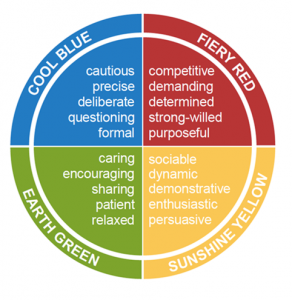
Relationships…we encounter them every day, some are good, some bad and some can be downright stressful. Wouldn’t life be so much more productive if you knew what others were thinking or how they react to certain situations? By using psychometric profiling or ‘insights’ through the on-boarding process of new hires, you can do exactly that!
Businesses are looking to get creative in obtaining this information, some have an extensive and rigorous interview process with a multitude of stages, others invite potential candidates into their offices for a few hours to experience the culture, but many are using personality profiling during the process.
Recently I’ve seen recruitment managers and businesses using results from personality profiling tools to make key hiring decisions before even meeting with a candidate. There are lots of profiling tools that can be used. They vary slightly on the results they give you, but ultimately it is down to your perception of yourself, more than anything else.
If you’re like me – a ‘people’ person and a keen people watcher – you’ll recognise that the perception that someone has of themselves, can differ to how they are perceived by others. That’s why I believe you shouldn’t use these as part of the upfront process because you might not get a true picture of the candidate. However, I think it’s a great tool to use as part of the onboarding of new hires. I have used Insights in the past and found it to be both accurate and helpful in my own personal development.
What are Insights?
Insights start with an online, multiple choice questionnaire, where upon completion a personal profile is generated giving a detailed and in-depth insight into individual strengths and weaknesses, approach to problems and your style of communication.
There are 4 colours Insights uses to highlight the different personality and behavioural traits. They are Cool Blue, Fiery Red, Sunshine Yellow and Earth Green. We all have a different mixture of the colours, that are unique to you.
People are not often aware of their personality traits – we all know someone who says they are ‘crazy’, but there are actually very normal – the same can happen in these tests. Some could think their weakness is around leadership, but they are actually a great leader but have just not recognised it themselves. This means you may be missing out on top talent and turning away your next superstar.
This is why I don’t think you should use it as a tool for recruitment, but as a leadership and personal development tool. It enables you to understand people’s personality and behavioural traits and tailor leadership approach and development plan to the individual:
- Help develop leadership potential
- Help to onboard and maximise the talent of employees
Why these tools are good for leadership and personal development?
It increases self-awareness, improves decision making, communication and ultimately performance.
Understanding your colours really helps with everyday business. However, understanding what colour the people around you are, is powerful, because it enables you to be better equipped for the conversation. For example, if you’re approaching a blue, you need to be armed with all the details and the process, however a red will want an action plan and purpose.
Personality profiling can be useful for assessing what someone’s perceived strengths are compared to their strengths in practice and can also help you understand how equipped they feel to handle various workplace situations. Additionally, knowing how a person identifies their strengths and weaknesses can help you understand how best to manage and support them, in order to get the best out of them.
You could be missing out!
I don’t believe using personality profiles to help sift through candidates for a job is the right way to use them, as there is a risk that the self-perception is incorrect. But, from personal experience, I do think using them as part of a development program can be very successful.
Are you a business that uses personality profiling in the recruitment process, then I’d be really interested to find out how and why, and if you’ve been successful in using this technique to recruit and retain new hires?
To have a chat about your executive search, contact me at carl@refind.co.uk.
You can view more about Carl Hinett our Executive search of HR professional’s specialist here.



